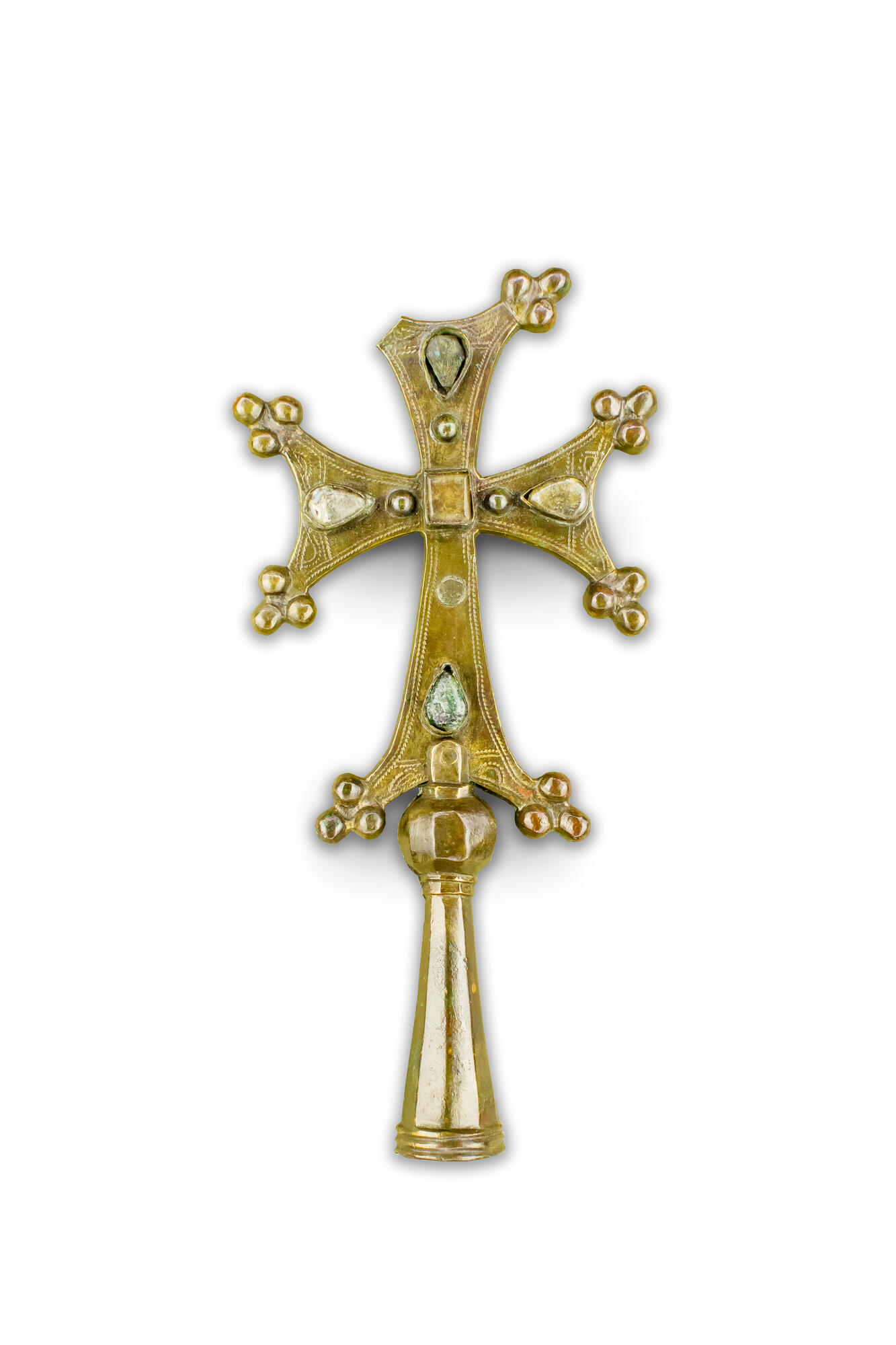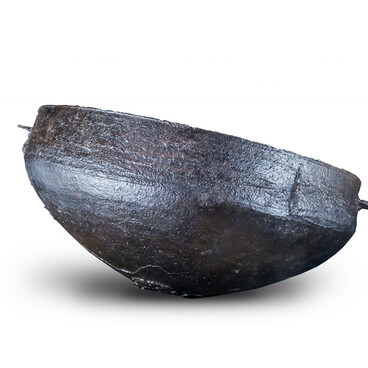The processional cross is used in church processions. It is carried in front of the procession on Palm Sunday, Christmas, Easter, as well as in honor of the hallows or icons of the saint. In the Orthodox tradition, the cross has an icon or crucifixion. The rays are often decorated with cameos, precious and semi-precious stones. In the old days, processional crosses were used in both feast and funeral ceremonies. They crowned the crosier, which was placed in the burial if the deceased was a representative of the upper ranks of the clergy.
A cross from the collection of the Bolgar Museum-Reserve was discovered during excavations in 2010.
Archaeologists drew attention to one burial. A man was in a sitting position in it, with his arms crossed over his abdomen. Between them was a cross with stone inserts, and the skull of the deceased was at his feet.
Archaeologists establish the date of the burial approximately to the 14th century. The upper vertical end of the cross shows the damage with which he was put in the grave. The arms of the cross forked ‘swallow-tailed " like Greek crosses, they were crowned with trefoils. From the outside, four glass inserts were attached to the rays. A decorative relief ran around the central insert, and a zigzag line was engraved along the perimeter of the cross. Judging by the condition of the relic, the cross was restored several times. Perhaps earlier it was covered with gilding, and there were precious stones on the arms instead of glass.
Scientists have put forward several versions of how this tomb came to be. According to one of them, the deceased could have been executed. In some Russian chronicles, it is recorded that in 1323 the Orthodox figure Fyodor of Jerusalem was executed and buried on the territory of the Horde. This grave probably belongs to a priest.
During the first attacks on Russia, the Horde burned temples and executed priests. There are records of the destruction of monasteries in Ryazan. Monks and nuns were slashed with swords, shot with bows and ‘thrown into the fire.’ However, after that, the leaders of the Golden Horde preferred to give the church privileges. They freed temples and monasteries from tribute and other duties. Christian teaching preached the idea of humility and submission to any authority, because ‘no authority is not of God, ’ which was in the interest of the conquerors.
A cross from the collection of the Bolgar Museum-Reserve was discovered during excavations in 2010.
Archaeologists drew attention to one burial. A man was in a sitting position in it, with his arms crossed over his abdomen. Between them was a cross with stone inserts, and the skull of the deceased was at his feet.
Archaeologists establish the date of the burial approximately to the 14th century. The upper vertical end of the cross shows the damage with which he was put in the grave. The arms of the cross forked ‘swallow-tailed " like Greek crosses, they were crowned with trefoils. From the outside, four glass inserts were attached to the rays. A decorative relief ran around the central insert, and a zigzag line was engraved along the perimeter of the cross. Judging by the condition of the relic, the cross was restored several times. Perhaps earlier it was covered with gilding, and there were precious stones on the arms instead of glass.
Scientists have put forward several versions of how this tomb came to be. According to one of them, the deceased could have been executed. In some Russian chronicles, it is recorded that in 1323 the Orthodox figure Fyodor of Jerusalem was executed and buried on the territory of the Horde. This grave probably belongs to a priest.
During the first attacks on Russia, the Horde burned temples and executed priests. There are records of the destruction of monasteries in Ryazan. Monks and nuns were slashed with swords, shot with bows and ‘thrown into the fire.’ However, after that, the leaders of the Golden Horde preferred to give the church privileges. They freed temples and monasteries from tribute and other duties. Christian teaching preached the idea of humility and submission to any authority, because ‘no authority is not of God, ’ which was in the interest of the conquerors.



